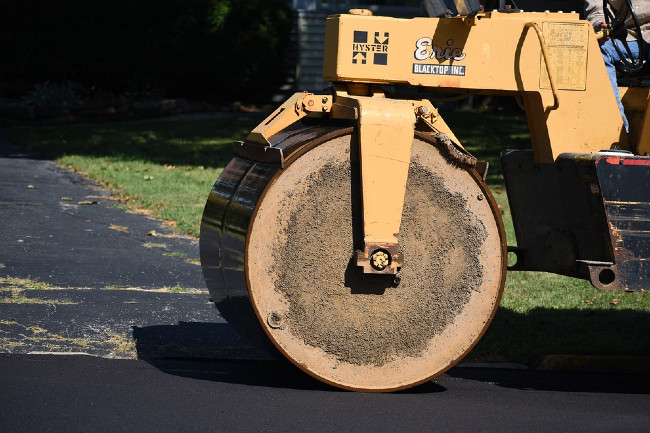Asphalt paving in the winter is quite difficult. However, if the weather cooperates, you may start asphalt paving in late fall or early spring. For you to pave asphalt surfaces, the ground must be dry and not frozen. This implies there should be no snow or rain.
People sometimes want to know whether they must wait until spring for a new asphalt driveway or parking lot. It is advisable to postpone asphalt paving until the winter season passes.
When Is the Best Time for Asphalt Paving?
The ideal temperature for asphalt paving is typically between 120 degree Celsius and 135 degree Celsius. Hence, the best time of the year for asphalt paving is during the spring and summer months. Although it is possible to do it at temperatures as low as 80 degree Celsius , you are less likely to get the desired results during that time. Paving is best done in the warm weather. Asphalt paving in the winter is less likely to give you the best results.
Weather elements like wind and precipitation are also important aspects to consider. Heavy winds can chill the asphalt as it is put down. If the ambient temperature is too near to the low temperature of 10 degrees Celsius , this might pose serious difficulties.
Tips for Asphalt Paving in the Winter
To guarantee a healthy and long-lasting paving and to get the most out of your investment, you must be careful about maintaining and protecting your asphalt all year.
It comes as no surprise that winter brings certain difficulties to asphalt surfaces. Asphalt works well in low temperature conditions, particularly when it is professionally built. However, the freezing, wetness, and snow that accompany it can cause significant damage throughout the season.
– Avoid Paving on the Frozen Ground
Allowing paving contractors to lay down asphalt when the ground is still frozen is a bad idea. Otherwise, the asphalt would deteriorate into a low-quality combination that will degrade relatively soon.
Even though the asphalt mixture is held at high temperatures, it will freeze and harden if put on the cold ground. When the snow melts, asphalt placed over the frozen ground will cause many potholes and cracks.
– You Must Wait for Dry Weather Conditions
As already said, asphalt paving in the winter is not a good idea. While paving an asphalt driveway, make sure that the weather condition is dry. It clearly means that it should not be snowing or raining. The ground must be dry as well.
– Sealcoating and Repair
The most important thing you can do to protect your asphalt in the winter is to repair cracks and potholes as soon as possible. As water from the rains and melting snow seeps into your pavement and freezes, even little and inexpensive fixes can turn into major and costly repairs.
Cracks and potholes are prone to standing water and pooling, causing these problems to enlarge over the season. It would be best if you repaired these before the temperature started dropping. This ensures less damage.
Bottom Line
It is never too late to protect the asphalt pavement and these tips should help you protect your asphalt paving in the winter. Asphalt paving in the late fall or early spring can create problems that need professionals with prior cold-weather-paving experience. You can always count on W&W Construction to deliver a high standard of service and quality workmanship.


Recent Comments